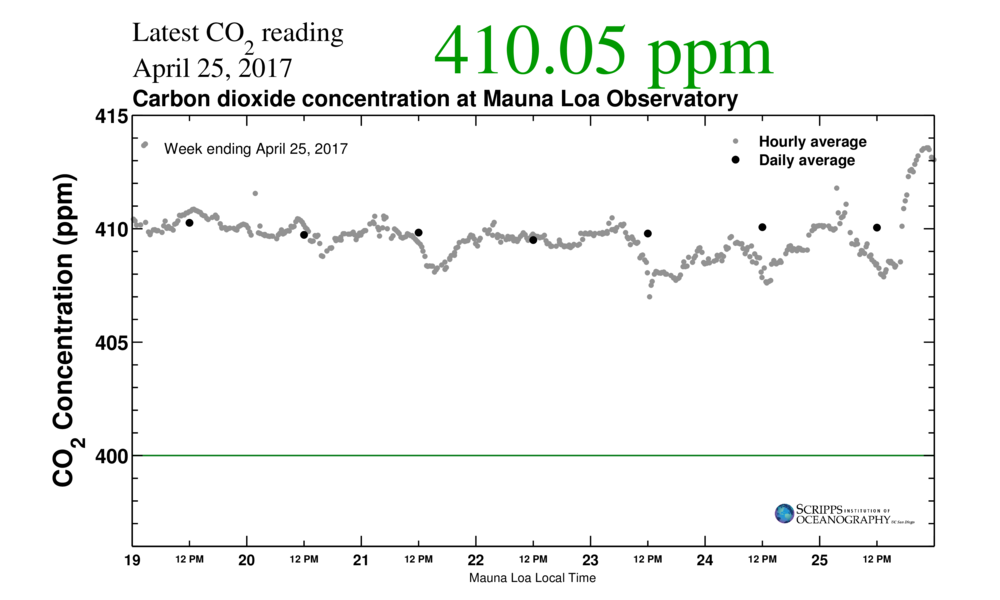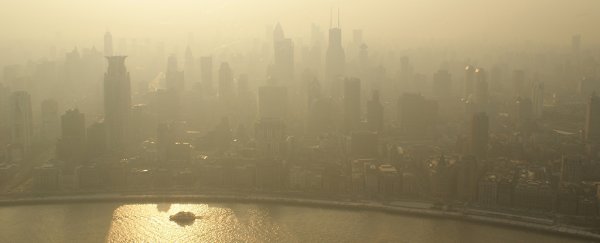On April 18, Earth breached its latest climate change milestone. For the first time in human history, atmospheric carbon dioxide levels were measured at 410 parts per million (ppm).
The Keeling Curve, a University of California San Diego, Scripps Institution of Oceanography program, recorded the milestone at Mauna Loa Observatory in Hawaii. This was a sobering moment for scientists, albeit hardly surprising.
Since last year, when our planet's dangerous new normal atmospheric CO2 levels were 400 ppm, scientists have warned the public that the next milestone of 410 ppm was coming.
"We're in a new era," Ralph Keeling, director of the Scripps Institution's CO2 Program told Yale Environment 360 at the time we passed this milestone.
"And it's going fast," Keeling added. "We're going to touch up against 410 pretty soon."
There is nothing uniquely significant about the numbers 400 or 410, but they offer points of comparison to scientists.
"These milestones are just numbers, but they give us an opportunity to pause and take stock and act as useful yard sticks for comparisons to the geological record," University of Southampton palaeoclimate researcher Gavin Foster explained to Climate Central in March.
 Keeling Curve
Keeling Curve
Now, more than ever, it is critical for all countries to work together to achieve a greener world.
While natural factors like El Niño have driven more carbon dioxide into the atmosphere over the past two years, these new records are mostly driven by humans burning fossil fuels in tremendous amounts and, in turn, creating record amounts of carbon dioxide.
"The rate of increase will go down when emissions decrease," National Oceanic and Atmospheric Administration (NOAA) atmospheric scientist Pieter Tans told Climate Central.
"But carbon dioxide will still be going up, albeit more slowly. Only when emissions are cut in half will atmospheric carbon dioxide level off initially."
Recognising the importance of taking action to stop climate change, scientists and laypeople across the United States marched for science on Earth Day, April 22.
Addressing the crowd in San Diego, Keeling declared: "The climate change debate has been over for decades."
Recent research shows that the global energy supply must be only 25 percent (or less) dependent on fossil fuels by 2100 to meet the goals of the Paris Climate Agreement.
Various countries are taking action to meet their own goals that are in accord with these global guidelines. China, for example, has introduced a cap on coal and will peak coal emission by 2030.
Germany will ban combustion engines by 2030. In the US, high-profile advocates for the environment have funded a 20-year clean energy fund to the tune of US$1 billion.
Britain recently set a record the world was happy to see: it had its first coal-free power day in 135 years.
Now is the time for a concerted, worldwide effort, and hopefully we'll start seeing more positive records.
This article was originally published by Futurism. Read the original article.
